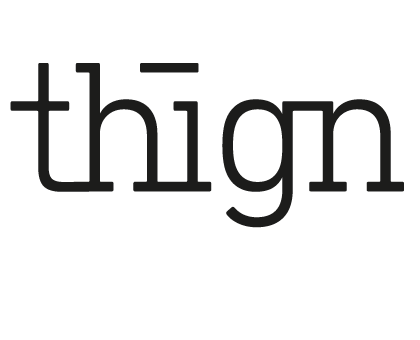The Dilemma of the Chatbots
At present, chatbots like Sir, Alexa, Cortana and the like are symbols as well as pioneers of digital networking. They serve as information providers, data porters, digital butlers and consultants. By offering smart products, chatbots have an increasing influence on the space of comprehensible reality. By implementing artificial intelligence, chatbots detach themselves from mere algorithms and become adaptive. Evolution is thinkable. In the future their success will not be determined by technical feasibility. But the limits of development, use and dissemination will be set by which competences will be given to them by humans and by who will take responsibility for their decisions.
To better assess the effects of bots controlled by artificial intelligence, possibly three relevant terms have to be explained: Turing Test, Artificial Intelligence and Social Bots.
The Turing Test
The Turing Test was proposed by Alan Turing in 1950 in order to test a machine’s ability to exhibit intelligent behavior equivalent to that of humans. The legendary test from the early period of computer science’s subsection Artificial Intelligence contributed to newly revitalize the myth of the thinking machine for computer age.
In the course of this test, a human questioner holds a conversation via keyboard and screen with two conversation partners unknown to him and without seeing and hearing them. One of the conversation partners is a human being, the other a machine. Both try to convince the questioner that they are thinking humans. If the questioner cannot definitely tell after intensive questioning which of the two is the machine, the machine has passed the Turing test and it is assumed that the machine has an intellectual capacity equal to humans.
A number of arguments have been put forward for why the Turing Test is unsuitable for the determination of intelligence:
“The Turing Test checks functionality only, not whether there exists intentionality or consciousness. This argument was elaborated amongst others by John Searle in his thought experiment of the Chinese room. Turing was already aware of this problem when formulating his test. But he took the view that the test could be taken as a proof of consciousness as well. Whereas Searle declined this.”
(Reference: Wikipedia, status of January 4, 2018)
AI – Artificial Intelligence
Today, the Dartmouth Summer Research Project on Artificial Intelligence in 1956 is seen as the hour of birth of the term Artificial Intelligence. In its funding proposal it was formulated
“that every aspect of learning or any other feature of intelligence can in principle be so precisely described that a machine can be made to simulate it. An attempt will be made to find how to make machines use language, form abstractions and concepts, solve kinds of problems now reserved for humans, and improve themselves.”
(Reference: Stanford University, status of January 4, 2018)
Automation, the handling of language, neural networks and creativity are topics in the proposal. Deep learning is already sketched under the heading of Self-Improvement.
The research field of Artificial Intelligence is dealing with the simulation, imitation and automation of human mind by machines / computers / computer programs. The question is how intelligent, autonomous, humanoid or self-aware computers can become? In some areas, computers already outperform humans: IBM’s chess computer Deep Blue beat world chess champion Garri Kasparow in 1996, Watson defeated his two human competitors in the quiz show Jeopardy! in 2011 and in 2016 Google’s AlphaGo beat the reigning world champion Lee Sedol at the Go board. What seems banal at first sight, is remarkable taking into account the handled complexity and was not even to be thought of at Artificial Intelligence’s hour of birth.
Social Bots
“Social bots are bots, aka software robots respectively agents, which exist in social media. They like and re-tweet, and they write and comment, hence have natural language abilities. They can also act as chatbots and thereby synchronously communicate with users.”
(Reference: Springer Gabler Publishing (ed.), Gabler Wirtschaftslexikon, keyword: social bots, or on the Internet: https://wirtschaftslexikon.gabler.de/definition/socialbots-54247 (status of January 4, 2018)
Google Hangouts (formerly Google Talk) is expected to revolutionize call centers. Chatbots should get standard and humans only fill in if chatbots no longer know what to do.
Social bots gone astray
There is no problem as long as social bots are recognisable as such. But the trend is towards social bots pretending to be humans (with name, profile and vita) and analyzing, generating and spreading information according to set parameters. The better their AI and language ability and writing skills function, the more difficult it is to decrypt their true, machine identity. Social bots can clone themselves, act in different roles and carry out orders. They process information and react in accordance with the programming and set intention.
Consequently chatbots can be used as multipliers in information management whose power and influence should not be underestimated. They move off like an army, armed with specific information, which can be spread continuously changing but always with the same intention and message through AI.
Decision-making powers
In order to avoid taking decisions which were not enabled by the user or are legally somewhat difficult, language assistants help themselves with excuses (“I do not understand your question”) or with references to other authorities. Everybody can test the current state of development by putting a simple question, like e.g. of suicide, emergency response, feelings or instructions which are more than a phone call or calendar entry. But the user interprets this as a lack of competence and consequently it brings about frustration respectively reduced usage which on the other hand is not wanted by the producers of these devices. In order to increase their market power, the producers work on chatbots increasingly precise and more powerful in decision-making. This also seems logical as only chatbots with extended decision-making power are really of help for users instead of remaining mere gimmicks. The direction of development is foreseeable.
Open Questions
- Do definable and adjustable parameters exist which assess and limit the consequences of actions?
- Is the user of chatbots responsible and liable for all chatbot decisions and their consequences?
- Or is the producer / provider of the chatbots responsible and liable for all decisions and their consequences?
- Who is responsible for improper use and its consequences?
- Are “supervisory duties” needed for the owner / user of smart devices?
- Will we take out insurances in the future that will discharge us from liability for wrong decisions of chatbots?
- Will a risk management be necessary like in equity trading (solid -> balanced -> offensive -> speculative -> high risk)?
- Can or should there be something like a risk exclusion of unpredictable catastrophes or improbable coincidences for chatbots?
- How could a customized digital ethic going beyond mere utilitarianism look like?
Outlook
The more Artificial Intelligence becomes a crucial part of chatbots and digital networking, the more the dilemma is shifting towards technology. In the near future more and more decisions will be taken by machines themselves alias autonomously. Human beings will be choosing parameters in the sense of presets only. Then it will more or less not be our dilemma – even if we feel the effects. The more responsibility we will hand over, the stronger other mechanisms will take effect which have yet to be developed by us because otherwise they will be forming themselves by Deep Learning & Co and their code will not be visible and controllable.



